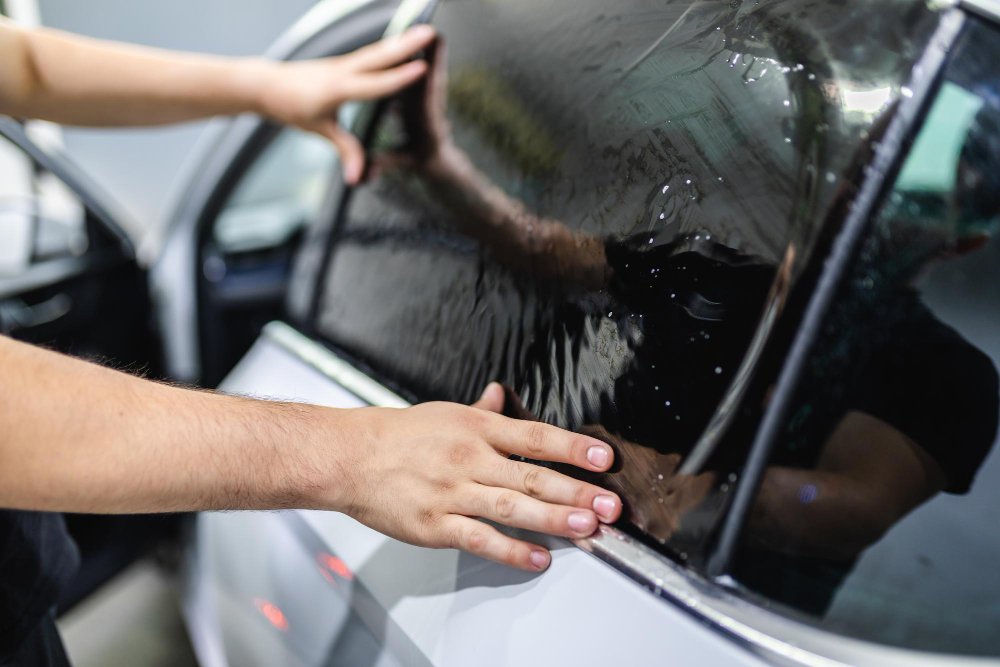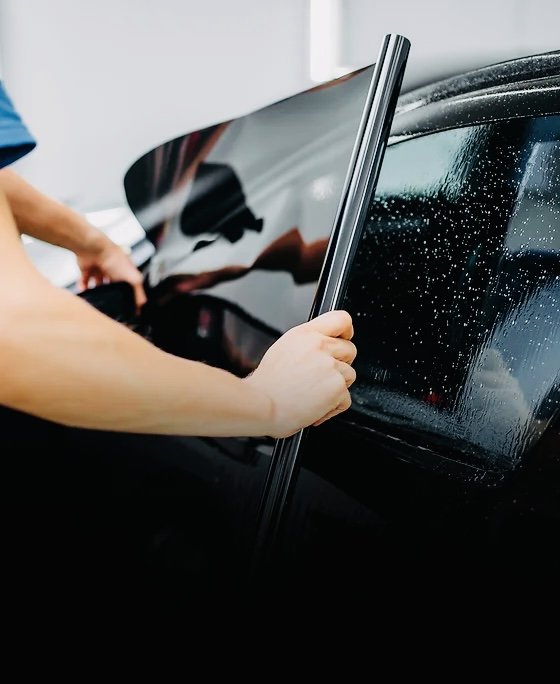Car Window Tinting: Find the Best Deals and Quality Providers Neighboring
Wiki Article
Window Tinting Rules and Standards: What You Need to Know Prior To Tinting Your Cars And Truck
Before continuing with window tinting for your lorry, it is crucial to acquaint on your own with the diverse regulations and guidelines that govern this practice throughout different states. These policies determine the allowable degrees of color darkness, often determined by visible light transmission (VLT) percentages, and include specific specifications for front windshields intended at making certain road security.Introduction of Home Window Tinting Regulations
Home window tinting regulations are often subject to variation across different territories, mirroring neighborhood regulations and safety considerations. These legislations determine the allowable levels of tint darkness and reflectiveness on automobile windows, making certain that motorists keep ample exposure while also safeguarding against unsafe UV rays and heat.Most policies identify window tinting based on the Visible Light Transmission (VLT) percentage, which suggests the amount of light that can go through the home window. Typically, reduced VLT percentages symbolize darker colors. Laws frequently separate between the front, side, and back home windows, with stricter limitations used to the front windscreen to enhance security for both the chauffeur and various other roadway users.
Conformity with window tinting regulations is vital, as infractions can result in penalties, necessary removal of the tint, and potential boosts in insurance coverage costs. It is important for car owners to acquaint themselves with neighborhood laws prior to proceeding with window tinting setups.
State-by-State Tint Rules
Understanding the certain home window tinting policies in each state is crucial for lorry proprietors looking for to comply with the regulation. Each state in the U.S. has actually established its very own collection of regulations regulating window tinting, which can differ considerably. These regulations usually dictate the allowed levels of tint darkness, the kinds of home windows that can be tinted, and any type of clinical exemptions that may apply.For circumstances, states like The golden state have strict limitations on color darkness for front windows, while others, such as New Mexico, may enable darker colors. In addition, certain states mandate particular exposure percents for various windows, consisting of the windscreen, front side windows, and back home windows. It is vital for automobile proprietors to acquaint themselves with their state's regulations to stay clear of potential fines or penalties.
Furthermore, some states may need a qualification sticker label to be put on colored home windows, showing conformity with state regulations. Failure to stick to these policies not only runs the risk of legal consequences however can likewise affect security and exposure while driving. Vehicle proprietors need to perform detailed study or get in touch with regional authorities to make sure full understanding and compliance with state-by-state color laws.
Allowed Color Levels and Types
Many vehicle owners might be amazed to learn that permitted tint degrees and kinds vary extensively throughout different states. Each state has developed its very own policies regarding the permitted darkness and reflectivity of home window tint, often gauged by Visible Light Transmission (VLT) percents. VLT refers to the quantity of light that can go through the tinted home windows; therefore, a lower percent suggests a darker color.
Furthermore, the kinds of tint materials permitted can vary, with some states restricting mirror-like or metal you could try these out finishes. It is essential for lorry owners to familiarize themselves with their state's details regulations to make sure compliance. Non-compliance can cause fines, obligatory elimination of the color, or other lawful consequences, making it essential to recognize these guidelines before waging installation.
Medical Exemptions for Tinting
While not all states provide allocations for medical exceptions regarding home window tinting, those that do recognize the requirement for specific people to enhance exposure and comfort because of medical conditions. Numerous clinical problems, such as lupus, skin cancer, and particular eye conditions, can provide individuals specifically sensitive to sunshine. Consequently, these individuals might require darker colors to safeguard themselves from harmful UV rays and glare.
It is essential to note that despite having a medical exception, there might still be limitations on the degree of color enabled. Conformity with state laws makes sure that people are both secured and within lawful limits. Those thinking about medical exceptions should contact their neighborhood Department of Motor Autos or equivalent authority to comprehend the procedures and demands essential to get an exemption successfully.
Fines for Non-Compliance
Failing to abide by window tinting legislations can bring about significant charges, which differ by state. Regulation enforcement firms are empowered to issue citations for cars that do not stick to the defined tinting laws. These penalties generally include fines, which can range from small quantities to a number of hundred bucks, relying on the severity of the violation and the state concerned.In some jurisdictions, repeated offenses may result in escalating fines or additional penalties, such as necessary court appearances. Moreover, non-compliance might require the elimination of illegal tinting, typically at the proprietor's expense. In extreme instances, regular transgressors might deal with suspension of their vehicle registration until conformity is accomplished.
Furthermore, insurance effects may arise from getting multiple citations for window tint violations. Insurers might check out such violations this contact form as an indication of riskier habits, potentially causing raised costs or difficulty in coverage.
To stay clear of these fines, it is crucial for vehicle owners to acquaint themselves with their regional window tinting laws and ensure that their vehicle complies (Window Tinting). This aggressive technique not only stays clear of legal implications yet likewise promotes road security
Verdict

A lot of regulations identify window tinting based on the Visible Light Transmission (VLT) percent, which suggests the quantity of light that can pass through the home window. Compliance with home window tinting policies is critical, as infractions can result in penalties, necessary elimination of the tint, and prospective rises in insurance coverage costs.Understanding the certain home window tinting laws in each state is vital for vehicle owners looking for to conform with the regulation. These regulations commonly dictate the permitted degrees of tint darkness, the types of home windows that can be tinted, and any kind of medical exemptions that might use.
For circumstances, states like California have strict limitations on color darkness for front windows, while others, such as New Mexico, may enable darker colors.
Report this wiki page